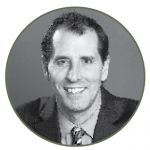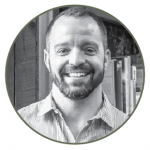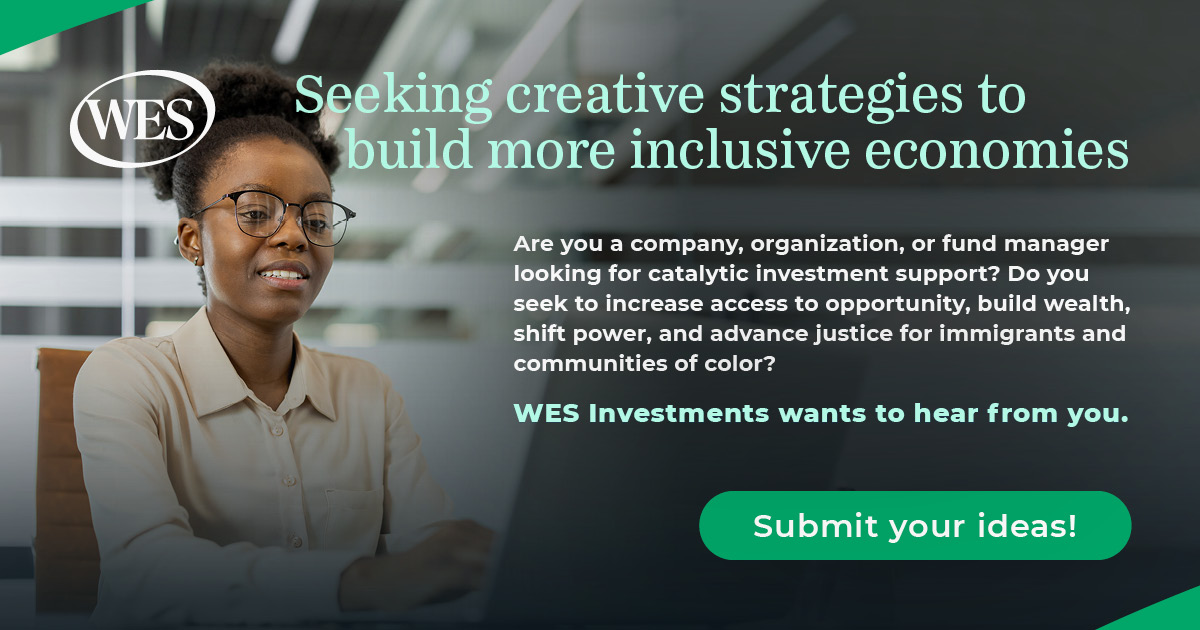Earlier this year, my companies, the Porter Group and the Conscious Venture Lab, formed a new partnership with an amazing consulting company from Baltimore. Since its founding 16 years ago, SHIFT, along with CEO Joe Mechlinski, have focused on helping organizations big and small shift the purpose of business away from a myopic focus on profit and towards a force for good in society. One of the things that made the business combination attractive to Joe and me was our collective focus on workplace culture as a driver of organizational performance. In our work together advising established companies and startups, we often pose three related questions:
- What does it mean to build a conscious, high-performing culture?
- How do you hire people into an organization who are likely to fit well and operate with the right mindset?
- How do you train executives of early-stage organizations to think about and implement culture in a mindful way?
As Mechlinski often puts it, “We spend a lot of time thinking about how to create a shared experience that’s deep. We think about looking at the whole self. How does someone’s head, heart, and gut show up at work?” In his work with companies, Mechlinski also puts a lot of emphasis on creating routines. “You don’t have to think about your anniversary or your birthday; you know what you’re going to do — you’re going to celebrate these moments,” he explains. To harness that same instinct for celebration and excitement at work, “We look at scheduling culture almost as a calendar. That goes for everything from how we start and end every meeting to how we think about the Friday before a holiday.”
When it comes to hiring, the question Mechlinski and I are asking is, how do you find people who are really willing to take their lives a little bit more seriously, to look at work as a tool to find their best selves? “We’re looking for organizations that believe that the single greatest lever of human potential is a more engaged workforce,” Mechlinski says. “And then we’re looking for people who see work as a place for them to make themselves better on a daily basis. Those are niche players, both companies and people, but that’s how we think about it at a high level.” We assumed that vetting highly engaged employees who would clearly be a good fit was indispensable to creating the sort of culture we wanted.
Greyston’s Other Way
Then along comes my friend Mike Brady. Brady is the CEO of Greyston Bakery, a New York-based social enterprise that for more than 30 years has been operating using an open-hiring model. When positions on the bakery floor become available, they go to the next person on the waiting list, without interviews, background checks, or any of the traditional filtering that’s normally part of the hiring process. I visited Greyston in Yonkers a few weeks ago, and the positive culture of the place was palpable. It made me wonder: how do they do that? How do they create a strong culture without spending all that time and effort up front that we do to figure out whether people are going to fit?
In the interest of exploring those two different ways to think about how to build a culture — by hand-selecting team members, or by accepting anyone who walks through the door — I recently convened a conversation between Mechlinksi, Brady, and Conscious Company editorial director Rachel Zurer. Here are the highlights of what we discussed.

 Rachel Zurer: Let’s start with the basics. Mike, how would you describe the culture at Greyston?
Rachel Zurer: Let’s start with the basics. Mike, how would you describe the culture at Greyston?
 Mike Brady: If I had to choose one word, it’s passionate. There is a culture on the production floor, which is 100 percent teamed by open-hiring employees, that is about ownership. They now have a job and they want to do everything in their power to be successful on the job and to allow their colleagues to be successful on the job.
Mike Brady: If I had to choose one word, it’s passionate. There is a culture on the production floor, which is 100 percent teamed by open-hiring employees, that is about ownership. They now have a job and they want to do everything in their power to be successful on the job and to allow their colleagues to be successful on the job.
But on the flip side, if new team members come on board and they don’t buy into that concept, they’re not going to feel comfortable working at Greyston. You need to carry your weight, not only in making brownies every day, but also in the way you’re trying to help and support one another on the line.
We think a lot about worker readiness and those skills that perhaps people new to the workforce aren’t as familiar with; responding to your colleagues, showing up to work on time, how to communicate with your senior managers, that kind of thing.
Also, the culture at Greyston has really benefited from a huge focus on quality, and on clear expectations that make it easy for people to understand, “Am I doing a good job or not?” We talk about this concept of “loving action.” If we see someone who isn’t delivering on the expected goals, quality targets, whatever it might be, it’s our responsibility to tell them. If we’re not doing that, we’re not really delivering the best we can to our team members.
 Joe Mechlinksi: When people get there, is it a sense of amazing gratitude because they know that you’re one of the few organizations that have the principles to hire in this way? How does that contribute to the culture?
Joe Mechlinksi: When people get there, is it a sense of amazing gratitude because they know that you’re one of the few organizations that have the principles to hire in this way? How does that contribute to the culture?
 MB: It’s not a no-brainer. Greyston is a hard place to work. You’re given an opportunity and people are grateful for that, but you quickly lose a little of that luster when you have to make a certain number of cases every day and you have to work hard. Then it’s just the day-to-day grind of getting through your job. People can reflect on, “Hey, this is a job I might not otherwise have,” but it’s still a difficult job.
MB: It’s not a no-brainer. Greyston is a hard place to work. You’re given an opportunity and people are grateful for that, but you quickly lose a little of that luster when you have to make a certain number of cases every day and you have to work hard. Then it’s just the day-to-day grind of getting through your job. People can reflect on, “Hey, this is a job I might not otherwise have,” but it’s still a difficult job.
Unfortunately, there are a lot of people in low-wage environments or those that haven’t worked before who don’t have confidence they can actually be successful. And so it’s their other team members who help them with that.
The other part of it is that not everyone comes to Greyston ready to change their lives. Some people come to just kick the tires. Some people come because their partner told them to. Some people come because their parole officer asked them to. They’re not fully committed. There are different elements at play all the time, so it’s not whistling and singing songs on the factory floor every day.
 Jeff Cherry: Can you talk about the intersection between regular hiring and open hiring?
Jeff Cherry: Can you talk about the intersection between regular hiring and open hiring?
 MB: Greyston is unique in that our entire [production] workforce is an open-hiring workforce. I want to believe that every business in the country can think about open hiring, integrated into their existing team. A shared experience around helping a team member who might not have had the same background or upbringing or opportunities that you’ve had be successful in the workplace — can that influence a culture in a positive way?
MB: Greyston is unique in that our entire [production] workforce is an open-hiring workforce. I want to believe that every business in the country can think about open hiring, integrated into their existing team. A shared experience around helping a team member who might not have had the same background or upbringing or opportunities that you’ve had be successful in the workplace — can that influence a culture in a positive way?
I want to believe it can, and I want to believe that I can inspire other business leaders to look across their workforce to find where they can put an open-hiring model in jobs that might have been inconsequential in the past but can now be the basis of a culture shift around communities, social justice, social innovation. And at the same time get a great team member on board.
JC: That’s a really interesting thing to think about, how instituting an open-hiring model will in and of itself have an impact on your culture. Because it speaks to the way you think about the world. The open-hiring model, your commitment to it as an organization, has the ability to impact your culture because of what it says about your beliefs.
JM: I think Mike is the cool guy on this call, seriously. What I love about the premise, not even knowing the whole story about open hiring, is it fundamentally assumes that everyone is employable. As I’ve worked with companies over the last 16 years, I’ve seen see the old generic thinking of, “This person can’t work for me,” or “This person was the wrong fit or the wrong hire,” all the way down to “They’re lazy, they’re not willing to work hard.”
I’m not suggesting that some of those things don’t potentially play out, but I love the idea that you start with the assumption that everybody is employable, therefore every organization can make a person profitable. I think that’s amazing.
The second piece I love about the philosophy of open hiring is that it already assumes that we’re crappy judges of character. It helps acknowledge what poor decision-makers we are — biases come out, whether it’s racial, sexist, personal experience, confirmation bias. At the end of the day, there are probably lots of opportunities within our economy for this philosophy to negate the arduous bureaucratic bullcrap of trying to de-risk your decision-making around hiring people when you could just say, “Hey, let’s do this differently.”
 MB: Literally billions of dollars are spent on filtering people out of the workforce. If we could just take a basis point of that and move it towards bringing people in … changing the model so that the challenges we have in “finding fit” aren’t done across the table from someone who doesn’t know how to smile, or doesn’t understand the importance of eye contact, but heck, they would be great at running a piece of equipment or showing up on time.
MB: Literally billions of dollars are spent on filtering people out of the workforce. If we could just take a basis point of that and move it towards bringing people in … changing the model so that the challenges we have in “finding fit” aren’t done across the table from someone who doesn’t know how to smile, or doesn’t understand the importance of eye contact, but heck, they would be great at running a piece of equipment or showing up on time.
Rather than having that dialogue across an interview table that’s completely uncomfortable, you have it at your workplace, and you’re investing in that person every day to try to be successful. If the fit doesn’t work out, you need to have the mechanisms to address it, but at least you know you’re giving that person an honest opportunity. That, Joe and Jeff, is where I think there’s amazing work to be done still. How do you work within the organization to give people those opportunities?
Because now at Greyston, of course, we’ve developed a whole model that’s very elaborate and successful at onboarding people who come from every background. We spend time thinking, “If someone walked in the door who speaks German, how do we give them an equal opportunity to everybody else?” Or people who don’t read. How does everyone get the same chance to be successful when obviously there are jobs that require people to read?
The other part is, I want my team members to be successful on the job. But if they’re living in a car or worried about the welfare of their children, are they really going to be present and mindful so that I can get product out the door? How can I continue to refine the mechanisms around what we’re doing to ensure that my team members, when they’re on the floor, are productive? There’s more work to be done there to make it understandable to other business leaders that this isn’t a huge expense. It’s just good business to ensure your team members are cared for so that they come to work and they’re present on the job. Who wants to say, “All right, Employee #25, see you tomorrow,” and know that they’re going home to issues of homelessness and hunger, when we might have the resources literally at our fingertips at work to help them be more thriving members in their own community? That’s where we’re going with open hiring. We’ve got a good number of years behind us, but I think we can still do better around that.
JM: I’m a believer. I believe that there is value in every human being and potential to be profitable. I’m a believer that equality and equity are important. What I love about the model, too, is it puts some shared responsibility on both parties. It’s not all roses and unicorns as someone gets going, but so often there is blame-shifting that happens in the traditional hiring model. You have someone who joins an organization, and 90 days in, says, “This isn’t what I thought it would be. It’s all their fault.” Or, “I was sold a bill of goods.”
Or conversely, the company says, “Gosh, after 90 days this person isn’t being productive.” Whatever the case may be, there tends to be a pointing of fingers on both ends because of the work on the front end.

The culture at Greyston Bakery involves what CEO Mike Brady calls “loving accountability.”
Because there isn’t the same traditional rigor on the front end, what happens next? What’s interesting about the open-hiring process in the first 90 days?
 MB: That’s where the greatest amount of transition happens, in those first 90 days. You’ve used great language around shared accountability there. On day one — this is an awesome meeting — we bring a cohort or pupil in and we tell them, “You have a job now and these are the expectations for you to keep that job. These expectations align with what it means to be a world-class facility.” We’re delivering product every day to Unilever; their requirements are harder than industry-level requirements, and we make that very clear. “It’s not a handout. It’s a hand up, for an opportunity. If you don’t accept that hand up, then you need to go find another opportunity.”
MB: That’s where the greatest amount of transition happens, in those first 90 days. You’ve used great language around shared accountability there. On day one — this is an awesome meeting — we bring a cohort or pupil in and we tell them, “You have a job now and these are the expectations for you to keep that job. These expectations align with what it means to be a world-class facility.” We’re delivering product every day to Unilever; their requirements are harder than industry-level requirements, and we make that very clear. “It’s not a handout. It’s a hand up, for an opportunity. If you don’t accept that hand up, then you need to go find another opportunity.”
That’s made extremely clear throughout the entire process, every day that you’re on the job. It’s that shared accountability that if you don’t show up to work, I’m not going to feel bad. I asked you to be here at 7 a.m., and that was very clear.
That clear communication from day one is for every job, all of us. The board has it with me; I need to know what my expectations are every year and deliver. If I’m unclear about it, I can complain about it.
We work very diligently to make sure there is clarity. Not everyone is ready to work. But without giving the person the opportunity, you wouldn’t necessarily know that. And so through that first 60, 90 days is where people don’t show up on time and they don’t return from breaks on time. We explain what’s going to happen, and then we let people go. But those who show up on time and commit to making world-class products are able to change their lives.
RZ: What if I want to be on time but the bus isn’t running or something? Do you have explicit channels or routines that help people ask for help around, “I want to make the commitment but I see an obstacle”?
 MB: Yup. So Bernie Glassman’s philosophy all along was around a concept that we want to help people who want to help themselves. So we don’t put in place all these artificial crutches as much as a model we call path-making. We’re all on a path to ensure our own success. To get there, we need to be able to voice what’s preventing us from being successful.
MB: Yup. So Bernie Glassman’s philosophy all along was around a concept that we want to help people who want to help themselves. So we don’t put in place all these artificial crutches as much as a model we call path-making. We’re all on a path to ensure our own success. To get there, we need to be able to voice what’s preventing us from being successful.
We have a person responsible for the activity of path-making, and then it’s also a philosophy within the organization. If I go to the board and tell them I have a problem, their responsibility is to help me overcome it. That’s a trust mechanism. A lot of people come to Greyston without having trust in many established organizations. They need to believe we’re actually going to help them, and that’s part of the culture on the floor. Their other team members say, “Yeah, go tell them. Tell them the bus doesn’t arrive on time. Because if you show up late, you’re definitely not going to make it.” Certain things we can’t change, obviously — the shift starts when it starts. But there are opportunities. As long as I’m getting brownies out the door and I’m running a profitable business, we can help people, but they do have to come to the table with asking for help.
JC: I think there has still got to be room for traditional hiring. You probably don’t have the same patience in the organization for making sure people are ready to work at executive levels. Do you disagree, Mike?
 MB: I think there’s a lot of applications for open hiring beyond entry-level jobs, that’s for sure.
MB: I think there’s a lot of applications for open hiring beyond entry-level jobs, that’s for sure.
JM: Traditional hiring, let’s keep chipping away at it. Whether we’re talking executive hiring or plant hiring, is there one thing that you would start to do to unhinge the traditional hiring model, a step in the direction of open hiring that would be both good for the world and good for business?
 MB: Look at your recruiting process to see how much you spend on filtering people out. Would you be willing to move any of those dollars into a more progressive model? I believe we could demonstrate incredible cultural value, incredible ROI that comes from that shift. Much like the way, years back, environmental sustainability had naysayers around, “I’ll do this but it’s not going to bring value to my organization.” I want to say, “This is a great business value for your organization. So look at all the money you’re wasting in these areas. Spend it on something else.”
MB: Look at your recruiting process to see how much you spend on filtering people out. Would you be willing to move any of those dollars into a more progressive model? I believe we could demonstrate incredible cultural value, incredible ROI that comes from that shift. Much like the way, years back, environmental sustainability had naysayers around, “I’ll do this but it’s not going to bring value to my organization.” I want to say, “This is a great business value for your organization. So look at all the money you’re wasting in these areas. Spend it on something else.”
JM: That’s great. We all have limited time and limited resources. We can devote this to weeding out or weeding in. There’s a good value proposition there. Especially as I think about the idea that tenure has dropped so significantly within organizations. The mobility in the workforce has never been greater than it is today, and so if all the work you’re doing is trying to select people out because you have this old-school thinking that people are going to be here for 15 years or ten years or even seven years, it’s just old thinking. It doesn’t add up. It doesn’t follow any of the research. The math is severely on your side, and it just helps that it’s amazing for the world.






